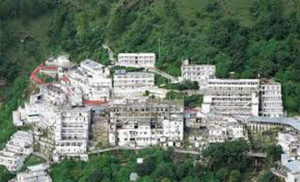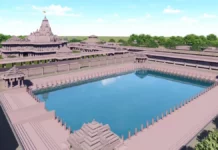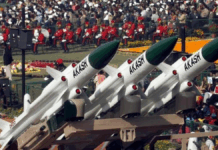 JAMMU: Nestled in the Trikuta Hills in Jammu and Kashmir’s Reasi district, the cave shrine of Vaishno Devi will now get its first master plan for protection, preservation and development of the area.
JAMMU: Nestled in the Trikuta Hills in Jammu and Kashmir’s Reasi district, the cave shrine of Vaishno Devi will now get its first master plan for protection, preservation and development of the area.
The Mata Vaishnodevi Shrine is the second busiest shrine in the country after the Tirupati Temple in Andhra Pradesh.
“The cave shrine and its abode Trikuta hills will now have its first master plan for protection, preservation, rejuvenation and development of the area and the shrine”, Chief Executive Officer (CEO) of the Shrine of Mata Vaishnodevi Shrine Board (SMVDSB) Ajeet Sahu told PTI.
The School of Planning and Architecture, New Delhi has been tasked to formulate the master plan in a period of six months with a focus on strengthening of ecology.
“The master plan will be formulated keeping in view a 40-50 years perspective of arising requirements”, Sahu said.
“We have recently gone through the preparation, status of the master plan for the entire shrine area from Banganga to Bhawan”, he said.
“There is an urgent need for putting in place a master plan for not only the creation of new facilities and enlarging the existing infrastructure but also protecting and preserving the fragile environment and ecology of Trikuta hills”, the CEO said.
Governor N N Vohra has emphasized that work for the formulation of the master plan for the shrine area must be done speedily so that the creation of new facilities and enlarging the existing infrastructure is based on a 40-50 years perspective.
“The governor has directed that once the master plan is finalized time bound action must be taken to ensure the implementation of its various components”, he said.
The shrine registered arrival of over 77.23 lakh faithfuls in 2016, 77.76 lakh in 2015 and 78.03 lakh in 2014.
To ensure a smooth trek for the pilgrims, the entire track has been lit up with 710 powerful sodium lamps besides 5000 parapet walls and 3000 meters of railing set up along the track for security and safety reasons.
There are over 650 water disposal points, 35 shelters- cum-sheds, 13 cafeterias and over hundred odd shops serving eatables and non-alcoholic beverages en route.
Over 150 hotels, lodges, guest houses and dharamsalas operate here.
In this direction, the SMVDSB will soon prepare a detailed project report (DPR) for the protection, rejuvenation and development of Banganga to secure the much needed objectives within a set time frame.
“We will soon prepare a DPR for the protection, rejuvenation and development of Banganga (base camp of shrine) to secure the objectives within a set time frame”, the CEO said.
Sahu said that all the directions of the National Green Tribunal for securing a pollution free environment in the entire Shrine area, particularly along the Banganga, are implemented on a time bound basis.
“The Board has also approved the Annual Greening Plan of Trikuta Hills area of the shrine. We will also plant attractive species along the tracks and for the protection of the hill slopes”, he said.
“Quality plants of varied species and flower seedlings are being raised in the Shrine Board s Nursery to meet entire sapling requirements under the Action Plan 2017-18”, he said.
The CEO said there will be maximum use of technological interventions which are pilgrim-friendly and those which promote protection of environment and ensure sanitation in the shrine area.–PTI





